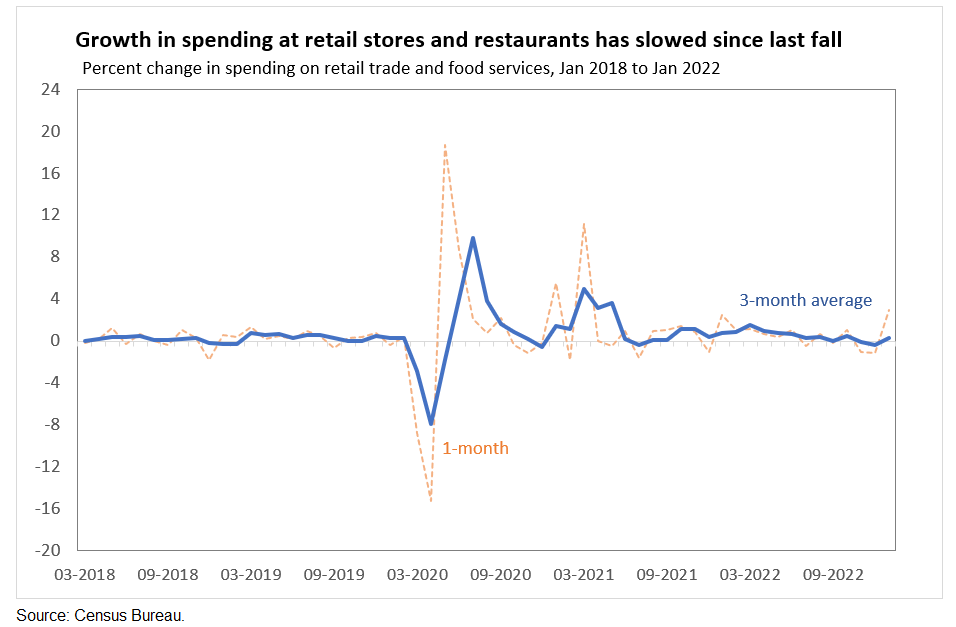A "Top Gun landing"
Markets and macro commentators obsess over every data release and constantly shift their views on recession and inflation risks. So what will this year look like?
Last May, as I watched the closing scene of Top Gun: Maverick, I said to myself, “That’s it. That’s our soft landing.” It was as clear then as it is now that our path out of high inflation will be rough. And we will land that plane without a recession.
Words matter. So let’s start with definitions:
Soft landing: inflation comes down, and we avoid a recession.
Softish landing: inflation comes down, and we have a mild recession.
Hard landing: inflation comes down, and we have a severe recession.
No landing: inflation stays high, and we have no recession.
My “Top Gun landing” is a soft landing, as in, inflation comes down, and we avoid a recession, except it feels nothing like soft.1
Not every month will be a good month for disinflation.
In some months, the data will look promising, and in others, they won’t, as I emphasized in my post about the Fed and inflation data:
…. some temporary relief on inflation is the large declines in goods prices as supply chains unsnarl and consumer demand rebalances to services. This dynamic has been essential for lower inflation in recent months but is unlikely to remain as large. And as a result, it will contribute to volatility in core inflation early this year. Not every month is going to be a good one for inflation. It never is.
And goods disinflation is not the only part: we know housing inflation—which has been a sizeable contributor to CPI inflation during the past year—is on track to turn down later this year as the declines in market rates pass through to the CPI and PCE prices. That will be a big deal. Also, with wage growth slowing, core services inflation, excluding housing, should soften. And immigration is moving back toward pre-pandemic levels, which, with immigrants’ high labor force participation rates, should help ease the labor shortages. We had 3.5% unemployment and 2% inflation before the pandemic. There’s no reason we can’t have that again.
It will be a team effort to bring us home.
The “landing” labels are misleading because they imply someone—often Fed Chair Jay Powell—is flying the plane. Repeat after me, “the Fed does not control the economy.” No one does. The Fed is not flying the plane alone. Yes, the Fed’s rate hikes are affecting interest-sensitive sectors like business investment, and financial markets, but the Fed is having a limited effect on consumer spending and labor markets.
Why? The labor market is strong, and unemployment is very low. That’s buffering the rate hikes. That’s buying us time for disruptions due to Covid and the war in Ukraine—which are affecting inflation and labor supply—to work themselves out. If you must put anyone in the cockpit, it would be hundreds of millions of American workers with Powell as co-pilot. The difference between a peak federal funds rate of 4.75 or 5.00 or 5.25 or 5.50 is nothing compared to developments in the labor market:
Take a deep breath.
The paychecks of some people in markets depend on correctly forecasting the Fed’s decisions. But be careful of getting whipped around by every data point. Fed is data-driven. They indeed ground their judgment about appropriate policy in data. It’s also true that the Fed is not a high-frequency trader. So smooth across the bumps; take three-month averages, for example, with this week’s retail sales. There was a big jump in January after two sizeable declines. On balance, spending growth is slowing.
In addition, the Fed will get data on employment (including any revisions to January), the CPI, and retail sales for February, as well as PCE spending and inflation for January before it votes in March. It’s too soon to say what its next move will be.
Also, here are your voting members: Powell, Williams, Barr, Bowman, Cook, Goolsbee, Harker, Jefferson, Kashkari, Logan, and Waller. In the end, they will decide, not the entire FOMC. I continue to think the endless speeches and media appearances by Fed officials are muddying the water and creating market volatility:
Fed officials will keep talking, but markets should take them with a grain of salt, especially with so much important outstanding data.
In closing.
There’s no guarantee that inflation comes down and unemployment stays low. As several experts have pointed out, that outcome would be unprecedented. Add it to the list from the past three years. Admittedly, getting out of the pandemic and clawing our way back to some semblance of normal in the economy has been crushingly slow. The war in Ukraine rages on, and there is little relief on food inflation on the horizon.
I don’t want to sugarcoat the outlook, but we are finally pointed in the right direction, looking over the past several months. We may be missing an engine and the landing gear locked up, but I expect we will pull it off.
Note my post is somewhat snarky. The creation of color terms in recent years like quiet quitting, the Great Recession, a rolling recession, and no landing drive me batty. Jargon is exclusionary since not everyone will understand it.







“I continue to think the endless speeches and media appearances by Fed officials are muddying the water and creating market volatility.”
I couldn’t agree more. I view various Fed Governors’ public pronouncements are driven by egos.
When inflation first started to rise on the supply side in 2021, Wall Street rewarded companies that had 'pricing power' to raise prices and research was published to help investors identify these companies. https://www.capitalgroup.com/advisor/insights/articles/inflation-pricing-power.html Wait...aren't those some of those industries also having supply chain issues?
After 30 years of market consolidation, pricing actions are closely followed/replicated in many industries. Fewer choices for consumers, higher prices and little competition to push prices down. When possible, labor demands higher pay; or local legislation increases higher minimum pay which leads to wage compression.
18 months later...we need to fight the tight labor market?